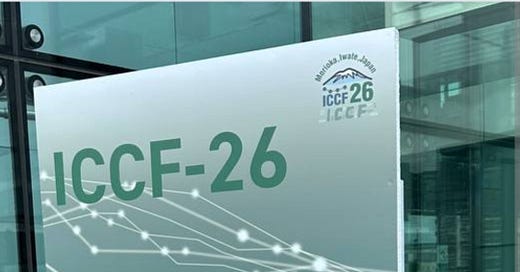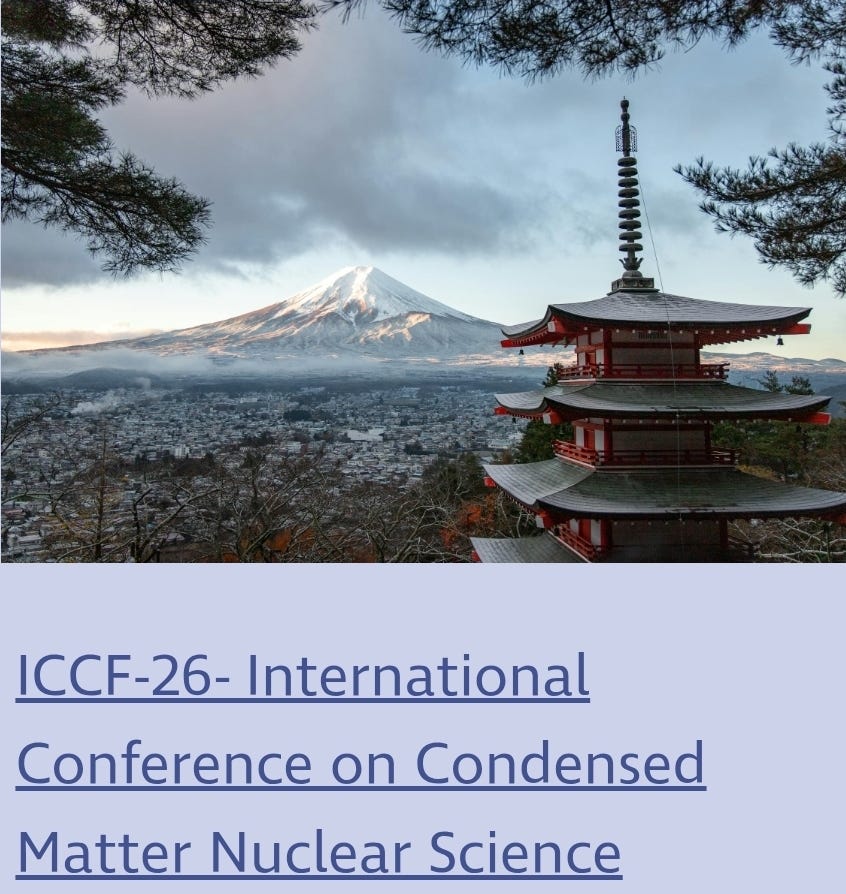ICCF26 Mid-Conference: Landmark Presentations and Commercial Prospects Emerge with LENR (Low Energy Nuclear Reaction)
ICCF26 Update: Breakthroughs in LENR & Commercialization News!
Morioka, Japan – May 28, 2025 – The 26th International Conference on Condensed Matter Nuclear Science (ICCF26) is in full swing in Morioka, Japan, marking a potentially pivotal moment for the field of Low Energy Nuclear Reactions (LENR). As the conference (May 26th-30th) reaches its midpoint, a series of significant presentations from world-leading universities and physicists have already highlighted new experimental successes, theoretical advancements, and burgeoning commercial applications.
The global nature of the research was underscored by presentations involving institutions such as the University of Cambridge, MIT (with Professor Peter Hagelstein among the speakers), and leading universities and research professors from Japan, China, India, and several European countries. This diverse participation emphasizes the growing international effort to understand and harness LENR.
Key Presentations and Announcements So Far:
Several speakers have delivered impactful updates:
Professor Bin-Juine Huang (National Taiwan University): Professor Huang presented his latest findings on a water cavitation reactor. His scientific report detailed clear evidence of low-energy nuclear reactions, including the production of isotopes, atomic transformations, and significant excess heat. He reportedly noted that these results suggest that technologies like ENG8's EnergiCells could produce very valuable materials in addition to substantial excess heat, with a Coefficient of Performance (COP) potentially many times greater than his experimental setup.
Lynn Bowen (Chairperson, The International Society for Condensed Matter Nuclear Science - ISCMNS): Ms. Bowen addressed the crucial topics of emissions from LENR reactors and overall safety. Her paper has reportedly prompted companies like ENG8 to consider implementing additional sensors to further ensure and verify the safety of their EnergiCell technology.
Professor Vladimir Vysotskii (Head of Department of Mathematics and Theoretical Radiophysics, Taras Shevchenko National University of Kyiv, Ukraine): Professor Vysotskii provided an update on the E-Cat reactor. He elaborated on the theoretical mechanisms by which earlier tests could have achieved a Coefficient of Performance (COP) of 100. Furthermore, he discussed how metal-hydrogen LENR systems like the E-Cat could potentially output electricity directly, in addition to heat. It was also mentioned that E-Cat systems are reportedly moving towards production within 2025, with a substantial number of pre-orders.
Professor Jean-Paul Biberian (Aix-Marseille University, key figure in CleanHME): Professor Biberian summarized the significant findings from the European Union's multi-country CleanHME (Clean Hydrogen-Metal Energy) program. This collaborative effort reportedly demonstrated that metal-hydrogen LENR systems could achieve a COP of 10, meaning they can output ten times more energy than is put into them.
Clean Planet Inc.: The Japan-based company Clean Planet updated the conference on its ongoing developments. They highlighted their collaboration with Miura Co., Ltd. for developing production facilities and a notable €7 million agreement with the Tokyo Metropolitan Council for a district heating system demonstrator. The conference also featured papers from several Japanese universities focusing on technologies within the Clean Planet research area, signaling growing academic and commercial synergy.
Haslen Back (CTO, ENG8): Mr. Back presented updates on ENG8's plasma-based LENR reactors, known as EnergiCells. He outlined the company's plans for developing a 100 kW power generator and ambitions to begin supplying commercial energy in Portugal starting next year.
Implications and Outlook:
The presentations, delivered in the first half of ICCF26, suggest a field gaining momentum, with increasingly robust experimental evidence and a clear trajectory towards commercialization for several entities. The emphasis on safety, alongside reports of high COP values and practical applications like district heating and power generation, indicates a maturation of LENR research and development to commercialization.
As the conference continues for two more days, the scientific community and industry observers will watch closely for further announcements and detailed discussions. The outcomes from ICCF26 are poised to significantly influence the direction and perception of condensed matter nuclear science in the coming year.
~New Fire Energy Inc.






